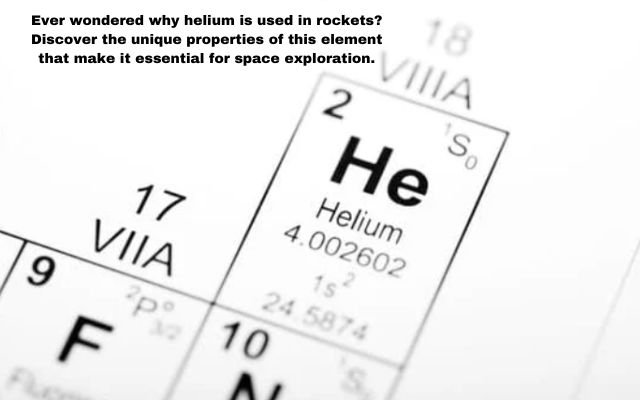What is Helium and Why is it Used in Rockets?
Discover what helium is and why it's used in rockets for pressurizing fuel tanks and cooling systems. Learn about its key role in space missions.

Boeing’s Starliner spacecraft landed safely in the New Mexico desert late on Friday, returning to Earth without any crew. This uncrewed landing is part of tests to ensure the spacecraft is ready for future missions with astronauts. Starliner is being developed as part of NASA’s plan to work with private companies to send astronauts to the International Space Station.
Helium is often used in rockets and spacecraft but it can be tricky to manage. Spacecraft use helium to pressurize fuel tanks, ensuring the fuel flows smoothly into the engines. Helium is great for this because it doesn’t react with the fuel and is safe to use. Helium is a tiny molecule and even the smallest crack can cause it to leak. This makes it hard to control, so engineers need to be very precise.
Many space missions like India’s Chandrayaan 2 and the European Space Agency’s Ariane 5 rocket, have faced problems due to helium leaks. These leaks can delay launches or disrupt fuel flow, affecting the mission’s success.
In short, helium is important for pressurizing rocket fuel tanks but its small size makes it hard to manage because it easily leaks through tiny openings.
Why Use Helium?
Helium is an inert gas, meaning it doesn’t react with other substances or catch fire. It is the second lightest element after hydrogen, with an atomic number of 2.
In rockets, achieving the right speed and altitude to enter and stay in orbit is crucial. If a rocket is too heavy, it needs more energy which means it will use more fuel and require more powerful—and expensive—engines. This makes the rocket more costly to build, test and maintain.
Helium also has a very low boiling point of -268.9°C (-452°F). This means it stays in gas form even in extremely cold conditions. This property is important because many rocket fuels are stored at very low temperatures and helium’s ability to remain gas helps manage these conditions effectively.
Helium is safe and non-toxic but you can’t breathe it alone because it replaces the oxygen we need to breathe.
How Is Helium Used?
Helium is used in rockets mainly-
- To pressurize fuel tanks
- To cool systems
Helium keeps fuel tanks pressurized. When fuel burns in the rocket’s engines, helium fills empty space in the tanks to keep the pressure steady. This ensures that fuel flows smoothly and continuously to the engines.
Second, helium is used in cooling systems. It’s non-reactive, so it can safely mix with any remaining contents in the tanks without causing problems. This helps keep everything running smoothly and safely.
Can Helium Leak?
Helium has very tiny atoms and a low molecular weight, which allows them to escape through small gaps or seals in storage tanks and fuel systems. Since helium is not common in the Earth’s atmosphere, even small leaks are easy to spot. This makes helium useful for finding potential problems in a rocket or spacecraft’s fuel systems.
For example, in May, just before Boeing’s Starliner spacecraft was about to launch with its first astronaut crew, sensors inside the spacecraft found a small helium leak in one of its thrusters. NASA took several days to analyze the issue but decided it was low-risk.
Later, after Starliner launched in June, more helium leaks were found in space. This contributed to NASA’s decision to return Starliner to Earth without its crew.
The frequent occurrence of helium leaks in space missions has highlighted the need for better valve designs and more precise tightening methods in the industry.
- Scientists Discover the Hidden Factor Beyond Intelligence in Academic Success
- Removing Toxic Chromium Using Sunlight: A Game-Changer for Wastewater Treatment
- Did a Cosmic Collision Leave a Mark on the Milky Way?
Are There Other Options?
Some rockets have used gases like argon and nitrogen instead of helium. These gases are also inert and can be cheaper, but helium is still more commonly used.
Europe’s new Ariane 6 rocket replaced helium with a new pressurization system. This system converts a small part of its liquid oxygen and hydrogen into gas to pressurize the fluids for the rocket engine.
Unfortunately, this system failed during the final stage of Ariane 6’s first launch in July, adding to the list of challenges the rocket industry faces with pressurization.



